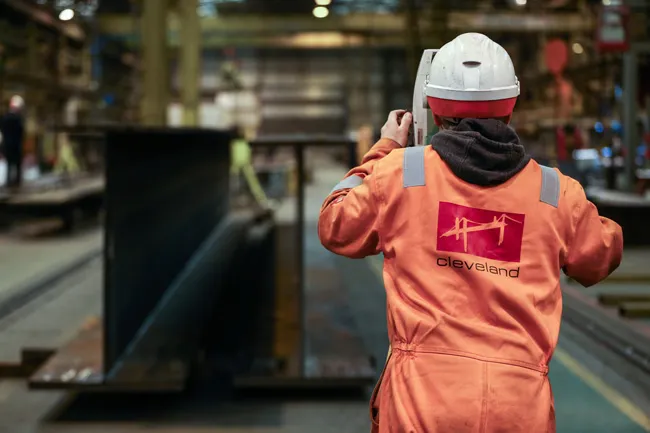The value of construction projects in the UK has shot up by 67.1% in the last year, according to a new report. New project contracts awarded in December 2013 totalled €7.31 billion (£6 billion), compared to €4.38 billion (£3.6 billion) in the same month in 2012.
The infrastructure sector proved to be an area of significant growth last month, with the total value of projects awarded reaching €2.68 billion (£2.2 billion), a 10.6% increase from November 2013 and a huge 101.6% year-on-year growth.
January 24, 2014
Read time: 3 mins
The value of construction projects in the UK has shot up by 67.1% in the last year, according to a new report. New project contracts awarded in December 2013 totalled €7.31 billion (£6 billion), compared to €4.38 billion (£3.6 billion) in the same month in 2012.
The infrastructure sector proved to be an area of significant growth last month, with the total value of projects awarded reaching €2.68 billion (£2.2 billion), a 10.6% increase from November 2013 and a huge 101.6% year-on-year growth.
These latest figures, taken from Barbour ABI's Economic & Construction Market Review, also highlight sustained growth in the residential construction sector, which continues to be boosted by initiatives such as the Government's Help to Buy scheme. The total contract value for December in this sector grew by 88.2% year-on-year.
On the findings of the report, Michael Dall, lead economist at Barbour ABI, said, "Residential construction remained strong throughout the latter half of 2013 and has truly spurred on the growth of the industry. In the most part, the increase in residential activity can be attributed to the Government's Help to Buy scheme, but there are concerns that demand created by such schemes will surpass the rate of house building. This is a topic that will be the source of major debate over the next 12 months in the lead up to the 2015 elections.
"The performance of infrastructure as a sub-sector is also incredibly encouraging. The figures are a reflection of an exciting year of renewed optimism for the construction industry and, as a major contributor to figures for the industry as a whole, the sustained period of strong project values in this sector is good news and a key indicator for future growth.
"The National Infrastructure Plan, as published by the Government on December 4th 2013, updated the top 40 infrastructure projects in the pipeline for the UK, outlining a pathway for potential growth. An increase in new orders data recorded by Barbour ABI encourages me to suggest that the sector does have strong growth potential this year."
As well as highlighting key sub-sector trends within the construction industry, data in the report also identifies regional variations in overall construction performance. Last month, Wales took the lead as the most prominent area, accounting for 19% of the UK total. This is largely attributable to an €975.27 million (£800 million) waste treatment project announced in Clwyd, providing a huge boost to the figures. London accounted for 18% of all contracts awarded, while Yorkshire and the Humber and the South East were not too far behind, each accounting for 13% and 12% of the total respectively.
The Economic & Construction Market Review is a monthly report designed to give valuable, current insight into UK construction industry performance. The Review is compiled from Barbour ABI's records of construction data for every UK planning application, and key indicators, such as the3598 Office for National Statistics' Construction New Orders data.
The Economic and Construction Market Review will be published monthly and is available to download at %$Linker:2 External <?xml version="1.0" encoding="utf-16"?><dictionary /> 0 0 0 oLinkExternal http://bit.ly/1eUKB9P download at - http://bit.ly/1eUKB9P false http://bit.ly/1eUKB9P false false %>
The infrastructure sector proved to be an area of significant growth last month, with the total value of projects awarded reaching €2.68 billion (£2.2 billion), a 10.6% increase from November 2013 and a huge 101.6% year-on-year growth.
These latest figures, taken from Barbour ABI's Economic & Construction Market Review, also highlight sustained growth in the residential construction sector, which continues to be boosted by initiatives such as the Government's Help to Buy scheme. The total contract value for December in this sector grew by 88.2% year-on-year.
On the findings of the report, Michael Dall, lead economist at Barbour ABI, said, "Residential construction remained strong throughout the latter half of 2013 and has truly spurred on the growth of the industry. In the most part, the increase in residential activity can be attributed to the Government's Help to Buy scheme, but there are concerns that demand created by such schemes will surpass the rate of house building. This is a topic that will be the source of major debate over the next 12 months in the lead up to the 2015 elections.
"The performance of infrastructure as a sub-sector is also incredibly encouraging. The figures are a reflection of an exciting year of renewed optimism for the construction industry and, as a major contributor to figures for the industry as a whole, the sustained period of strong project values in this sector is good news and a key indicator for future growth.
"The National Infrastructure Plan, as published by the Government on December 4th 2013, updated the top 40 infrastructure projects in the pipeline for the UK, outlining a pathway for potential growth. An increase in new orders data recorded by Barbour ABI encourages me to suggest that the sector does have strong growth potential this year."
As well as highlighting key sub-sector trends within the construction industry, data in the report also identifies regional variations in overall construction performance. Last month, Wales took the lead as the most prominent area, accounting for 19% of the UK total. This is largely attributable to an €975.27 million (£800 million) waste treatment project announced in Clwyd, providing a huge boost to the figures. London accounted for 18% of all contracts awarded, while Yorkshire and the Humber and the South East were not too far behind, each accounting for 13% and 12% of the total respectively.
The Economic & Construction Market Review is a monthly report designed to give valuable, current insight into UK construction industry performance. The Review is compiled from Barbour ABI's records of construction data for every UK planning application, and key indicators, such as the
The Economic and Construction Market Review will be published monthly and is available to download at %$Linker:








